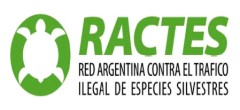The species in these areas are under constant threats from poaching, illegal logging, human-wildlife conflict (livestock predation), and road kills due to their expansive borders with local communities, close proximity to roads, and inevitable understaffing. Despite these threats, the forests in Misiones Argentina are known to have intact species assemblages including top predators like jaguars and harpy eagles; however, carnivore densities are dramatically lower than at other neotropical sites and several times lower than predictions from just over a decade ago. While the exact cause of these extremely low estimates is unknown, pressures from poaching, illegal timber harvest, human-wildlife conflicts, and road kills are suspected to be directly associated. These lower than expected carnivore densities emphasize the need to determine how these elusive, wide-ranging species are using the habitat so that their protection can be optimized, populations conserved, and appropriate management strategies devised.
 Field team from L to R: K. DeMatteo, detection dog "Train", J.P. Zurano, D. Ojeda, B. Holman, detection dog "Lucas" (Missing from photo: M. Piedrabuena). By: K. DeMatteo
Field team from L to R: K. DeMatteo, detection dog "Train", J.P. Zurano, D. Ojeda, B. Holman, detection dog "Lucas" (Missing from photo: M. Piedrabuena). By: K. DeMatteoEnsuring the long-term survival of the large carnivores in this ecosystem requires understanding how they navigate their heterogeneous landscape. Providing biological corridors and wildlife crossings are ways to minimize human-wildlife conflict and road kills for landscape carnivores as they disperse across fragmented or altered areas; however, this requires understanding the movement patterns of landscape species that have home ranges or territories composed of intact habitat dissected by farmland, pasture, and roads.
Noninvasive techniques and analyses (detection dogs to locate scat, genetic analyses on scats for species- and individual-identification, and GIS analyses of scat location and genetic information) will be used to fill in several missing pieces in the conservation puzzle: 1) Gather needed information on the basic ecology of four landscape carnivores (jaguar, bush dogs, pumas, and ocelots) that will aid in developing species-specific conservation management strategies, 2) Gain an understanding of how these four coexisting predators that share similar ecological requirements relate to each other, so that comprehensive management strategies can be developed, and 3) Determine where biological corridors and wildlife crossing should be placed in order to minimize human-wildlife conflict and maximize connectivity for wide-ranging carnivores.
This success of the project is linked with 1) a large collaborative effort with Argentinean colleagues that represent a variety of institutions including Ministerio de Ecologia RNRyT, UNaM-Posadas, CONICET, and Conservacion Argentina and 2) the generous funding provided by Palm Beach Zoo Conservation Fund, Conservation, Food, and Health Foundation, Chester Zoological Gardens, Woodland Park Zoo, and the University of Missouri-St. Louis.
Fuente: Jaguar Conservation Fund 7 de agosto de 2010





No hay comentarios:
Publicar un comentario